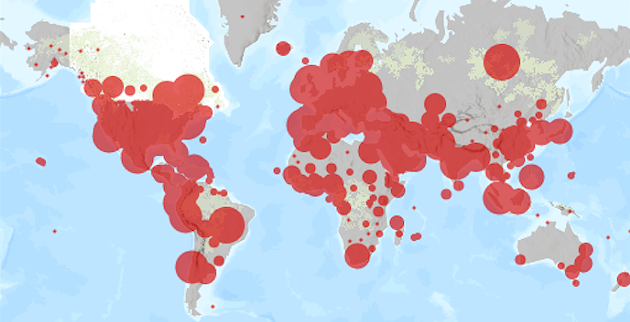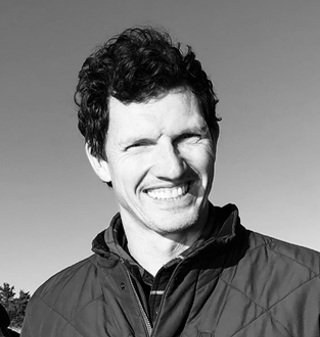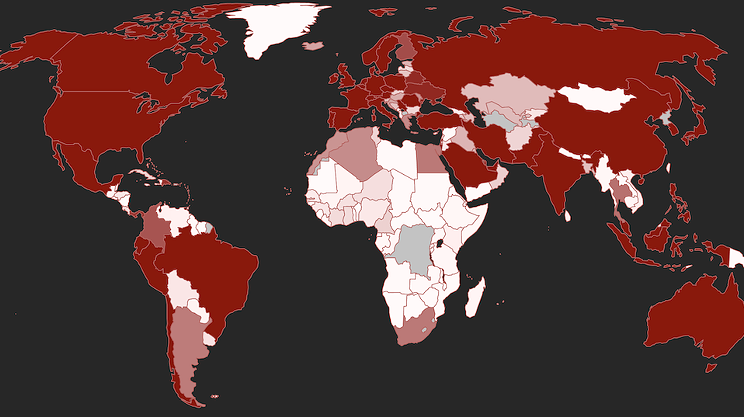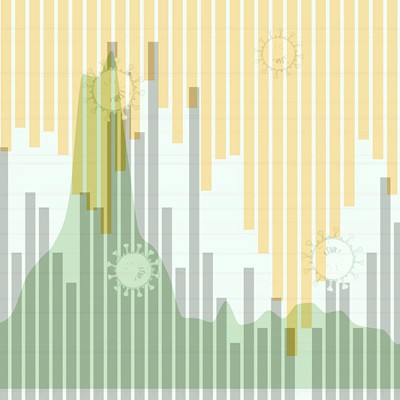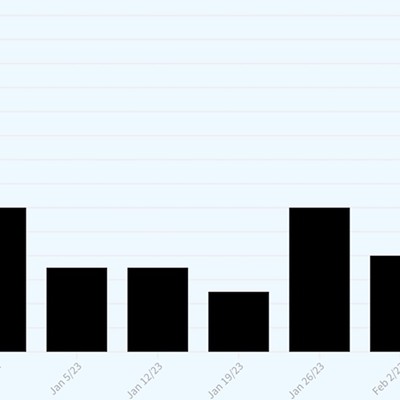We're all a little familiar by now with statistical curves and the idea that they can be flattened. The global COVID-19 infection curve started with a long slow rise—a pot of cold water coming to a boil—followed by a sharp leap up, like a rocket taking off. That rising curve trajectory brought us to 1,000,000 cases of C19 diagnosed around the world in 137 days from the first infection, an average of just 7,300 cases per day.
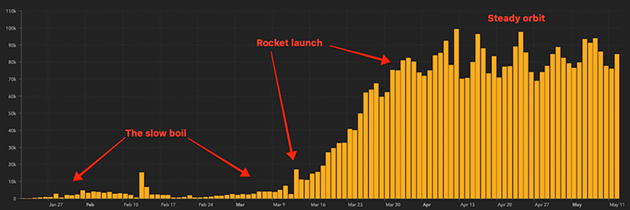
But it didn't go completely flat. Two million cases happened in 13 days. Three million cases took 12 days. Four million cases, reached May 8, took 11 days. The difference from 11 to 12 to 13 is basic math, literally child's play. Nothing like the engineer's play that is the leap from 137 days to 13. So it's comforting. It's slow and steady. But to be sure, that is a steady increase in COVID's pace. The disease is still accelerating, just not as dramatically as a rocket after lift-off.
The above graph (click here for a mobile-friendly version if it's cut off on your screen) shows how many cases are reported every day on average, for each million-case point. It's not going down yet. En route to 2,000,000 cases, there were around 75,000 cases per day, while that daily number was about 90,000 on the way to four million.
Many places around the world are seeing their cases go down. Here in Nova Scotia, the last province in Canada to have a case, we are past the peak of the current wave—our average daily cases was 27 in April, and has fallen to six a day so far in May.
But it's a big world, with enough places where C19 cases are increasing to more than make up for the decreases. And societal lockdowns, widely prescribed as an effective way to limit the disease's spread, have a potential side effect of increasing pressure to open economies back up. The main treatment we've got might encourage a return to the sort of human interactivity that enables the virus.
The world's case numbers are a collection of all the local situations; the planetary prognosis is actually a science experiment being run by politicians and public health officials in countless provinces, states and nations. Nova Scotia's leaders are explicitly cautious, slow to ease social restrictions. The American state of Georgia is deliberately aggressive, pushing to reopen the economy quickly. Meanwhile the COVID rocket stays in orbit, speeding above us all, betraying no sign that it's ever going to come back down.

